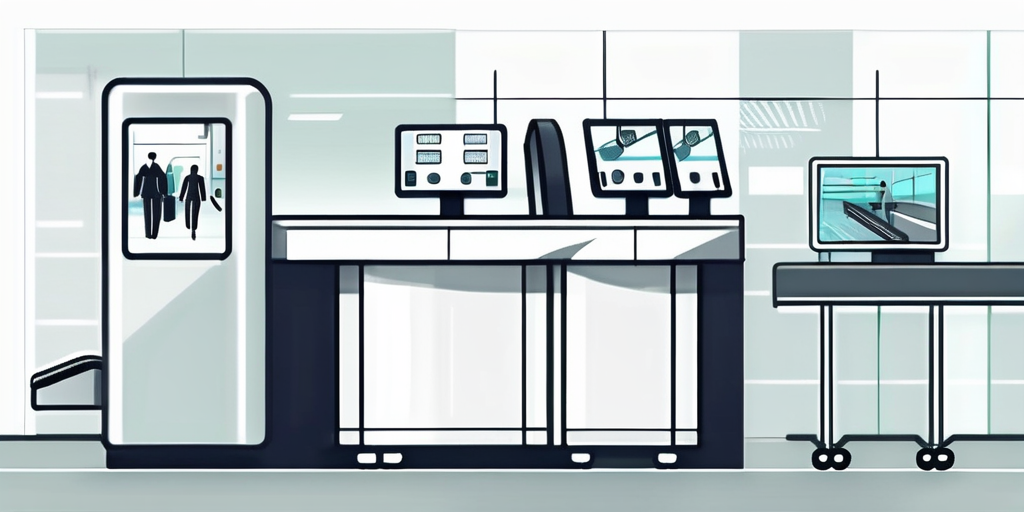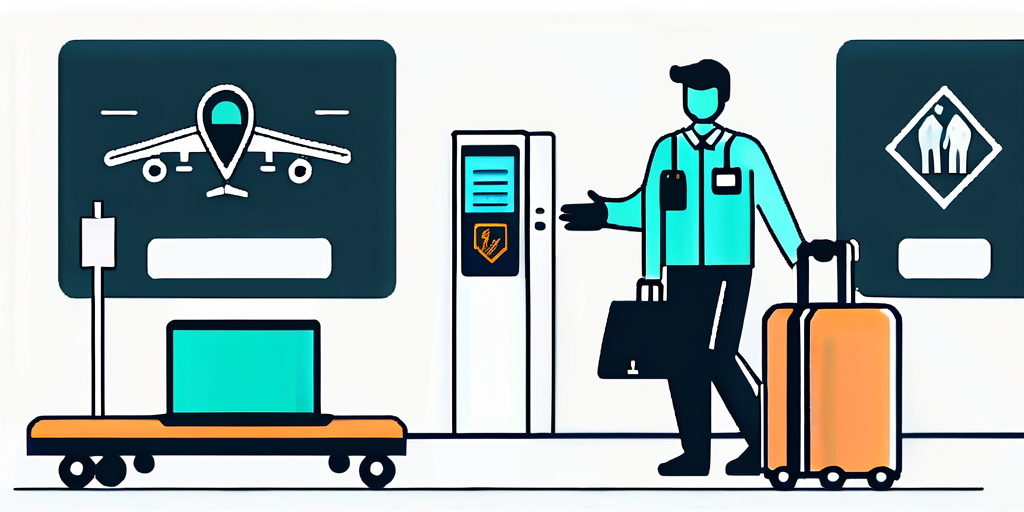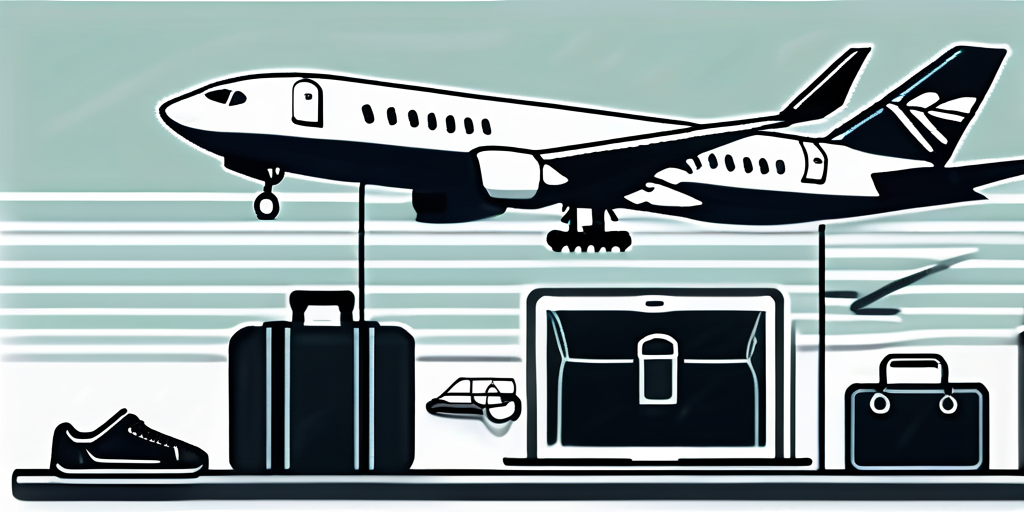Do You Have to Go Through Security Again for a Connecting Flight?
Understand if you need to go through security again for a connecting flight. Learn about procedures, exceptions, and tips for smoother travel.
Understanding Airport Security Procedures
When traveling through airports, security procedures can sometimes be confusing and time-consuming. If you have a connecting flight, you may wonder whether you need to go through security again. Let's delve into this topic to clear up any misconceptions and provide you with a better understanding.
One important aspect to consider is the layout of the airport. Some airports are designed in a way that allows passengers to move between connecting flights without having to go through security again. This is often the case when the connecting flights are within the same terminal. However, in larger airports or when transitioning between international and domestic flights, re-entering the security checkpoint may be necessary.
The Role of TSA in Airport Security
The Transportation Security Administration (TSA) plays a crucial role in maintaining airport security in the United States. Their primary focus is to ensure the safety of passengers by implementing strict security measures. While TSA procedures are in place to protect travelers, they can also cause inconvenience and frustration.
It's important to follow TSA guidelines and be prepared when going through security. This includes removing any liquids or gels that are more than 3.4 ounces from your carry-on luggage and placing them in a clear, quart-sized bag. Additionally, be ready to remove your shoes, belts, and jackets, as well as any electronics larger than a cell phone, to expedite the screening process.
International vs. Domestic Security Procedures
The security procedures for international and domestic flights may vary. If you are on an international connecting flight, it is more likely that you will need to go through security again. This is because international airports often have separate terminals or concourses with their security checkpoints.
When traveling internationally, you may also encounter additional security measures, such as passport checks and customs screenings. These procedures are in place to ensure compliance with international travel regulations and to verify the identity of passengers entering or leaving a country. It's essential to allow ample time for these screenings to avoid missing your connecting flight.
Factors Influencing Security Checks for Connecting Flights
Apart from the destination and the airport you are traveling through, there are several factors that can influence whether you need to go through security again for a connecting flight.
 Understanding the intricacies of airport security procedures can help travelers navigate the complexities of connecting flights more efficiently. While many passengers may assume that going through security once at the initial airport is sufficient for their entire journey, the reality is that various factors come into play, influencing the need for additional security checks.
Understanding the intricacies of airport security procedures can help travelers navigate the complexities of connecting flights more efficiently. While many passengers may assume that going through security once at the initial airport is sufficient for their entire journey, the reality is that various factors come into play, influencing the need for additional security checks.
Layover Duration and Security Checks
The duration of your layover plays a significant role. If you have a short layover, you are unlikely to go through security again. However, if you have a long layover, you may be required to leave the secure area and go through security again when re-entering before your next flight.
Long layovers can present both challenges and opportunities for travelers. While extended waiting times can be a source of frustration, they can also offer a chance to explore the amenities of the airport, relax in lounges, or even venture outside for a brief excursion if time permits. However, it's crucial to factor in the possibility of additional security checks during long layovers, as this can impact your overall travel experience.
Different Airlines, Different Rules
It's important to note that different airlines have their policies regarding security checks for connecting flights. Some airlines may require all passengers to go through security again, regardless of the duration of their layover, while others may allow passengers to stay in the secure area. Be sure to check with your airline to understand their specific rules.
Furthermore, the collaboration between airlines and airport authorities plays a significant role in determining security protocols for connecting flights. Seamless coordination between various stakeholders is essential to ensure a smooth transition for passengers moving between flights. By staying informed about the security procedures of both the airline and the airport, travelers can better prepare for any security checks they may encounter during their journey.
Navigating Airport Security for Connecting Flights
Tips for a Smooth Security Experience
To ensure a smooth security experience for your connecting flight, here are some tips:

- Arrive at the airport early to allow ample time for security procedures.
- Be prepared by having your boarding pass and identification readily available.
- Follow the TSA's guidelines on liquids, gels, and electronics to avoid any complications.
- Wear easily removable shoes to speed up the screening process.
Remember, it's always a good idea to check the TSA website for the most up-to-date information on what items are allowed in carry-on luggage. This can help you avoid any last-minute surprises at the security checkpoint.
Additionally, consider signing up for TSA PreCheck or Global Entry to enjoy expedited screening processes at participating airports. These programs can save you time and hassle, especially if you frequently travel for business or leisure.
Dealing with Special Circumstances: Infants, Disabilities, and Medical Conditions
If you are traveling with infants, have disabilities, or medical conditions that require special assistance, it is advisable to inform the airline or TSA in advance. They can provide guidance and support to make the security process more manageable for you.
For travelers with medical conditions, carrying a doctor's note or medical certificate detailing your condition and necessary medications can help expedite the screening process. It's also recommended to pack medications in your carry-on luggage to ensure they are easily accessible during the flight.
Common Misconceptions About Airport Security and Connecting Flights
Debunking Myths About Security Checks
There are several myths surrounding security checks for connecting flights. Let's debunk some of the most common ones:
- Myth 1: You always have to go through security again for a connecting flight.
- Myth 2: It is faster to go through security again than to stay in the secure area.
- Myth 3: You can bring large quantities of liquids and gels on a connecting flight.
- Myth 4: TSA PreCheck or Global Entry guarantees bypassing security for connecting flights.
While it is true that connecting flights often require passengers to go through security again, there are exceptions. Some airports have designated transfer areas where passengers can move between flights without undergoing another security screening. However, this is not the case for all airports, so it's essential to check with airport staff or your airline to determine if you need to go through security again.
Additionally, the time it takes to go through security again for a connecting flight can vary depending on the airport, time of day, and other factors. In some cases, it may be faster to remain in the secure area and proceed directly to your next gate. It's always a good idea to allow ample time between flights to account for potential delays at security checkpoints.
Clarifying Common Confusions
It is essential to clarify common confusions to ensure a smoother journey:
- Airlines may have different rules, so it is important to check with your specific airline.
- Passengers should always follow the directions provided by airport personnel.
- Security procedures may change, so it is important to stay informed and up to date.
Remember that airport security measures are in place to ensure the safety of all passengers and staff. By understanding the facts and staying informed, you can navigate the airport experience with confidence and ease.
Changes in Security Procedures Over the Years
Impact of Technological Advancements on Security Checks
Over the years, technological advancements have revolutionized airport security procedures. Advanced imaging technology and more efficient machines allow for enhanced detection capabilities, reducing the need for time-consuming manual inspections.
 Furthermore, the integration of artificial intelligence (AI) and machine learning algorithms has enabled security systems to analyze data in real-time, identifying potential threats with greater accuracy. This proactive approach enhances overall security measures, providing a safer environment for travelers.
Furthermore, the integration of artificial intelligence (AI) and machine learning algorithms has enabled security systems to analyze data in real-time, identifying potential threats with greater accuracy. This proactive approach enhances overall security measures, providing a safer environment for travelers.
How Global Events Shape Airport Security
Terrorist attacks and other global events have significantly shaped airport security procedures. In response to these threats, airports have implemented more stringent security measures to ensure the safety of all passengers. These measures include thorough screening processes and enhanced monitoring systems.
Moreover, international collaboration among security agencies has become crucial in addressing evolving security challenges. Information sharing and joint training exercises help strengthen security protocols and foster a more unified approach to global security.
In conclusion, whether you have to go through security again for a connecting flight depends on various factors such as layover duration, destination, and airline policies. It is essential to follow the guidelines provided by the TSA and your specific airline to ensure a smooth and hassle-free travel experience. Stay informed about any changes in security procedures and always allow sufficient time to navigate through the airport. By being prepared and knowledgeable, you can minimize stress and maximize your enjoyment of your journey.
Flight Disruptions? Claim Your Compensation with ClaimCompass
While navigating through airport security is an essential part of your journey, dealing with flight disruptions shouldn't add to your stress. If you've experienced a delayed, cancelled, or overbooked flight, ClaimCompass is here to support your rights as an air passenger. With expertise in EU Regulation 261/2004, we can help you claim up to 600€ in compensation. It's hassle-free: simply submit a claim using our compensation calculator, and we'll handle everything from submission to collection. Remember, there are no fees unless you receive compensation, and we're committed to keeping you informed every step of the way. Don't let flight disruptions disrupt your peace of mind—let ClaimCompass advocate for you.
